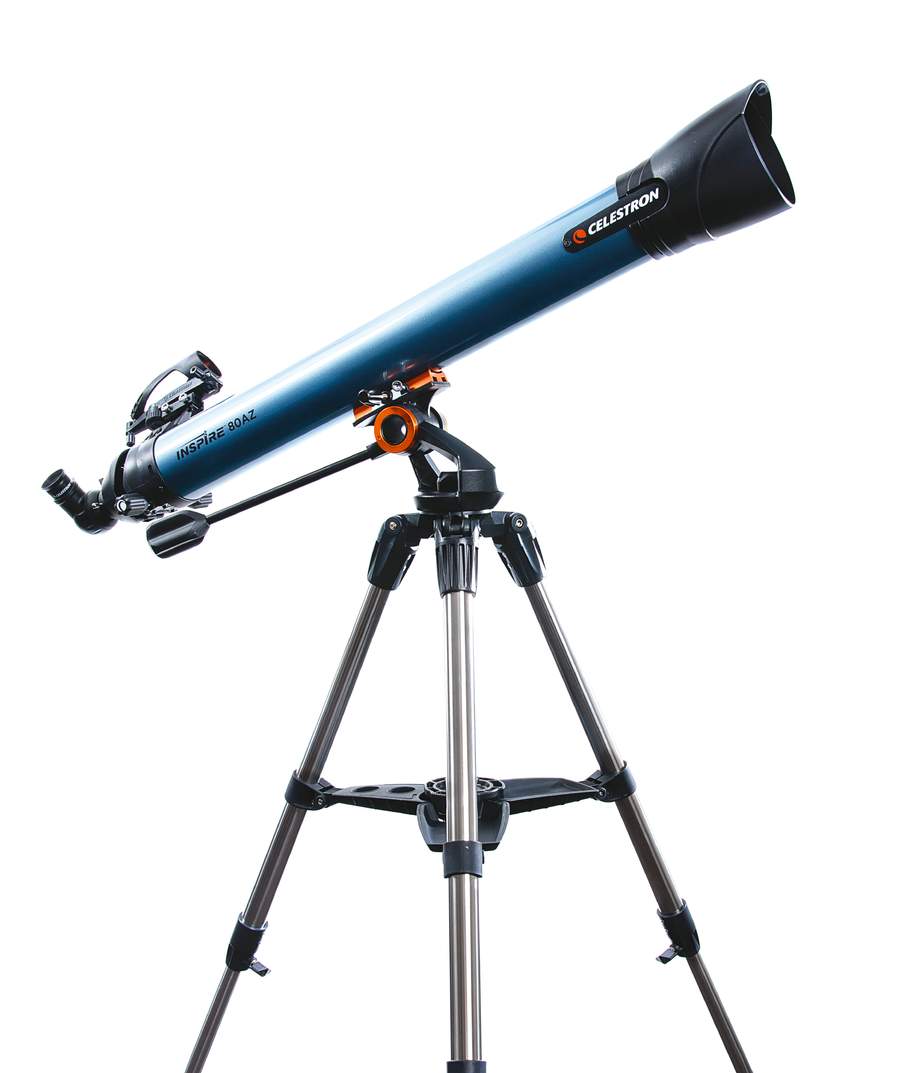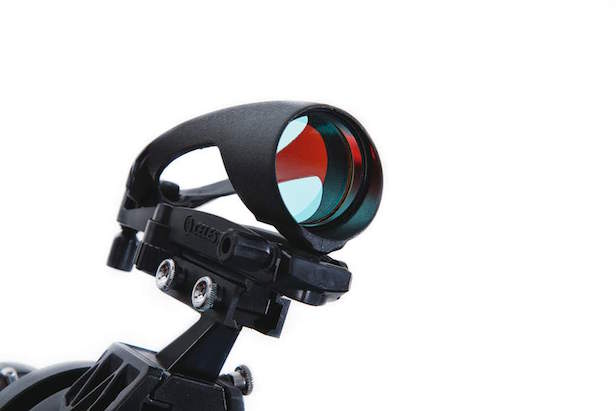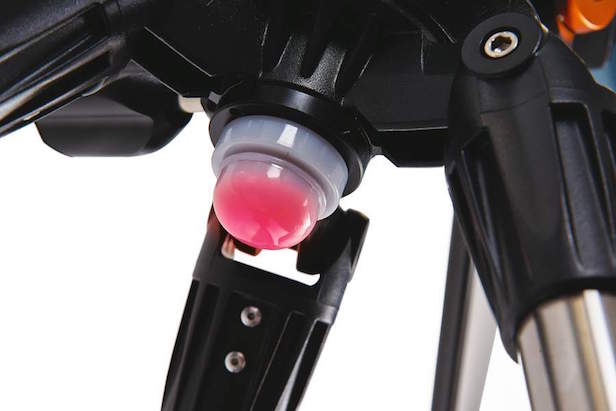Review: Celestron Inspire 80AZ refractor telescope
The second largest telescope of a new range proves to be a reliable starter instrument at a budget price

The smartphone holder has a rubberised friction surface and elastic bands to secure your phone into place.
Telescope Advice
Cost: £179 (approx $231)
From: Tring Astronomy Centre
Type: Refractor
Aperture: 3.15”
Focal length: 34.43”
Best for…
Beginners
Medium budget
Planetary viewing
Lunar viewing
Bright deep-sky objects
Basic astrophotography

The StarPointer Pro finderscope allows you to easily locate your object in the night sky before looking through your eyepiece
The Celestron Inspire 80AZ is the new and improved member of the Inspire family. Not only have its superior optics and accessories increased its observational capabilities, but it’s also incredibly easy to transport and assemble wherever needed, since it promotes a light and effortless set up. This refractor is not only ideal for dipping your toes into observing bright deep-sky objects, its optical system provides decent views of the Solar System.
The refractor telescope comes with a 90-degree diagonal (1.25”), a pair of 20mm and 10mm Kellner eyepieces and a StarPointer Pro finderscope, which provides you with everything you need to start your observations of the cosmos. There are also a few other items that come with the kit that are rarely included with a beginner’s telescope, such as a telescope cap that doubles as a smartphone holder as well as a detachable LED red flashlight. This red flashlight can either be attached to the mount to shine on the tripod tray, but can also be detached, making it useful piece of kit to have in your observing arsenal. The fact that the flashlight is red is important for your night vision, since your eyes normally take between 20 to 30 minutes to adjust to the dark. With the Inspire 80AZ comes a download code for Celestron’s ‘Starry Night’ astronomy software. This software will allow you to plan your observing sessions, but because this telescope doesn’t have a computerised mount, it’s not possible to make the most of the software using the ‘Go-To’ facility. It could be useful if you already have a computerised Celestron telescope, or are looking to upgrade to one sometime in the future.
The assembly of this telescope is a fantastically straightforward aspect of this equipment. You simply open up the tripod legs and secure the built-in accessory tray’s position, then fit the telescope tube into the dovetail lock on the alt-azimuth mount. As this is a beginner’s telescope, you’ll have to manually slew the telescope to track a deep sky object, which requires the simultaneous movement of the two axes. Tracking smaller targets with this scope can be a challenge since it requires a delicate, steady hand – something that can be a challenge to achieve for a beginner. However, practise does make perfect, meaning that the user should be able to overcome this for a satisfying observing experience.

The LED red flashlight can be fixed into the mount, or you can detach it for external use.
One of our review sessions was focused on the observing of the Moon, as it was roughly 90 per cent luminosity, so the majority of the lunar surface was available for us to see. The 20mm eyepiece showed the overall surface of the Moon with is 45x magnification. If you want a closer look, you’ll need to use the 10mm eyepiece for a magnification of 90x. Due to the impressive optics of this telescope, we were able to deduce the most famous lunar landmarks, including the Tycho and Copernicus crater and the grey lunar mare. If you come across this view in your use, it will serve as a fantastic opportunity to utilise the smartphone holder and acquire a snapshot of the Moon. Fortunately, it’s easy to attach, since there are a few elastic bands to ensure that the phone is fixed into position. Remember, if there is an option to change your screen colour to red, this will greatly benefit your night vision.
A later observing session, saw us treated to a New Moon phase, affording us the opportunity to seek out and test the Inspire 80AZ mettle on deep-sky objects. Having just missed our opportunity to observe Jupiter, we turned our attention to the ringed gas giant Saturn, which shone brightly at an impressive magnitude of 0.36. Although its luminosity made the planet easy to navigate to, the angular size of Saturn was considered too small to fully appreciate its beauty, even with the 10mm eyepiece. Refractor telescopes commonly produce slightly blurry views, due to lens aberration, which created a challenge in resolving Saturn and its ring system. We advise experimenting with a selection of eyepieces, which you’ll need to buy separately either from Celestron or an independent telescope retailer.
The 20mm eyepiece provides the much wider field of view out of the two eyepieces, which means you are able to search a larger potion of the sky. This is not best suited for the Solar System planets, and we discovered it to be much more useful for the bright deep-sky objects. We decided to try and look at our neighbouring galaxy, Andromeda – designated Messier 31 – which is much fainter than a Full Moon, but six times larger on the sky. The light gathering capabilities of this telescope passed the test, as it revealed the oval of light with the largest concentration luminance at the core of the spiral galaxy. The 20mm managed to display an adequate view with the lower magnification. With the favoured winter months on the horizon, we will have the ‘old faithfuls’, such as the Orion Nebula (M42) and Pleiades star cluster (M45), back in the Northern Hemisphere. With the arrival of these, it will provide a much brighter collection of deep-sky objects to observe.
The Celestron Inspire 80AZ is an excellent telescope for a beginner; its easiness to carry and set up is the key selling point, and the optics are to a good enough standard to reveal some enjoyable targets in the night sky. The detachable LED red light and the smartphone holder are features that do not usually come with many beginner scopes, but are indeed very useful extras for preserving night vision and getting started in basic astrophotography.




